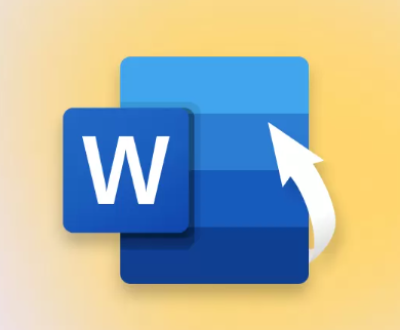Moving the EFI System Partition (ESP) to another disk on a Windows 11 system is a complex and advanced task that requires deep understanding of the system’s architecture and boot process. The EFI partition is crucial for the operating system’s ability to boot, and improper handling can result in a non-bootable system. Therefore, careful planning and execution are critical to avoid causing harm to the system.
EFI Partition in Windows 11
The Extensible Firmware Interface (EFI) partition, also known as the EFI System Partition (ESP), is a special partition on a data storage device that is used by computers adhering to the Unified Extensible Firmware Interface (UEFI) standard. The EFI partition is integral to the boot process because it contains the bootloader and other necessary files that help the operating system start.
When you boot up a UEFI-based system, the firmware scans for the EFI partition to load the operating system. The EFI partition typically contains the following components:

Bootloaders
Device drivers
System utilities
Configuration files
It is worth noting that the EFI partition must be formatted as FAT32. and the size usually ranges from 100MB to 500MB. In a typical Windows 11 installation, the EFI partition is created automatically during the setup process.
Importance of the EFI Partition
The EFI partition’s role in the boot process is paramount. It provides an interface between the firmware and the operating system, allowing the system to locate and execute the bootloader. Without a properly configured EFI partition, the system won’t boot.
Furthermore, this partition may also contain boot files for other installed operating systems, making it essential for dual-boot or multi-boot setups. This makes the EFI partition a vital component in managing system startup and recovery procedures.
Reasons for Moving the EFI Partition
Though rare, there are a few specific scenarios where someone might want to move the EFI partition to another disk:
Replacing a System Disk: If you’re upgrading or replacing the current system disk (e.g., switching from an HDD to an SSD), you may need to move the EFI partition to the new drive to ensure the system can boot from the new disk.
Disk Space Management: Some users may want to reorganize their partitions or reclaim disk space on the original drive where the EFI partition resides. Moving it to a separate disk may be part of this restructuring.
Multi-Drive Setup: For users who run multiple drives (e.g., RAID configurations or separate drives for different operating systems), keeping the EFI partition on a dedicated disk might simplify boot management.
Drive Failure: If the drive that currently houses the EFI partition is failing, moving the partition to a healthy disk is a preventive measure to avoid data loss or boot issues.
Optimization and Speed: SSDs are faster than HDDs, so moving the EFI partition to an SSD can reduce boot time.
Challenges in Moving the EFI Partition
Moving the EFI partition isn’t as straightforward as simply copying and pasting files. There are several challenges and potential risks associated with this process:
System Boot Failures: If the migration process isn’t performed correctly, the system may fail to boot. Recreating a functional boot configuration from scratch can be difficult, especially without backup or recovery options.
Drive Letter and Partition Labeling: The EFI partition does not have a drive letter by default, and the system relies on its identification as the first partition. When moving the partition, Windows needs to recognize it correctly on the new disk.
Partition Alignment: Ensuring that the new EFI partition is correctly aligned on the target disk is crucial for compatibility and performance. Improper alignment can lead to issues with the UEFI firmware recognizing the partition.
Modifying the Boot Configuration Data (BCD): After moving the partition, the Boot Configuration Data (BCD) store must be updated to reflect the new partition’s location. This step is highly sensitive and may require advanced command-line tools, such as bcdedit, to complete.
Backup and Recovery: If something goes wrong during the migration process, it’s important to have a complete system backup and recovery tools at hand. Restoring a backup may be necessary to recover from a boot failure.
Prerequisites for Moving the EFI Partition
Before attempting to move the EFI partition, there are several essential prerequisites that you should have in place:
Backup Your System: Perform a full backup of your system, including the operating system, applications, and personal data. You can use tools like Windows Backup or third-party software like Macrium Reflect.
Create a Windows 11 Installation USB: If something goes wrong, you’ll need to have a bootable Windows 11 USB drive available to access recovery options and repair the system.
Familiarity with Disk Management: Understand how to use Windows Disk Management or a third-party partitioning tool, as you will be modifying partitions on your disks.
Knowledge of Command-Line Tools: Familiarity with tools like bcdedit, diskpart, and bcdboot is essential, as you’ll need to use these to update the boot configuration after moving the EFI partition.
Step-by-Step Process to Move the EFI Partition
Now, let’s go through the detailed steps involved in moving the EFI partition to another disk in a Windows 11 environment:
1. Back Up Your Current EFI Partition
Before moving the EFI partition, it’s crucial to back up its contents to avoid losing any critical boot files. You can use software like Macrium Reflect or AOMEI Backupper to create a backup image of the partition.
2. Prepare the Target Disk
Ensure the target disk has unallocated space where you will create the new EFI partition. You can use Windows Disk Management to create an unallocated space if necessary.
3. Create a New EFI Partition on the Target Disk
Use Windows Disk Management or a third-party tool like MiniTool Partition Wizard to create a new partition on the target disk:
Right-click on the unallocated space and select “New Simple Volume.”
Format the partition as FAT32.
Make sure the partition size is between 100MB and 500MB.
4. Assign a Temporary Drive Letter to the New EFI Partition
To copy files from the old EFI partition to the new one, you’ll need to assign a temporary drive letter to the new EFI partition:
Open Command Prompt as an Administrator.
Use the diskpart utility to list your disks and partitions:
sql
diskpart list disk select disk [number] list partition select partition [number] assign letter=[letter] exit
5. Copy EFI Files to the New Partition
Now, copy all the files from the current EFI partition to the new one:
Assign a temporary drive letter to the old EFI partition using diskpart.
Use the following command to copy the contents:
robocopy X:\ Y:\ /mir
Replace X:\ with the drive letter of the old EFI partition and Y:\ with the drive letter of the new EFI partition.
6. Update the Boot Configuration Data (BCD)
After copying the files, you need to update the BCD to point to the new EFI partition:
Open Command Prompt as an Administrator.
Use the bcdboot command to rebuild the BCD:
bcdboot C:\Windows /s Y: /f UEFI
Replace C:\Windows with your Windows installation drive and Y: with the new EFI partition’s letter.
7. Remove the Old EFI Partition
Once you’ve confirmed that the system boots successfully from the new EFI partition, you can remove the old EFI partition. Use Disk Management or diskpart to delete the old partition and reclaim the space.
8. Verify the Boot Process
Restart the system and verify that Windows boots correctly from the new EFI partition. If everything works as expected, you’ve successfully moved the EFI partition.
About us and this blog
Panda Assistant is built on the latest data recovery algorithms, ensuring that no file is too damaged, too lost, or too corrupted to be recovered.
Request a free quote
We believe that data recovery shouldn’t be a daunting task. That’s why we’ve designed Panda Assistant to be as easy to use as it is powerful. With a few clicks, you can initiate a scan, preview recoverable files, and restore your data all within a matter of minutes.
Subscribe to our newsletter!
More from our blog
See all postsRecent Posts
- How to recover accidentally deleted files 2025-07-01
- How do i recover a file i accidentally deleted 2025-07-01
- How to recover an accidentally deleted file 2025-07-01

 Try lt Free
Try lt Free Recovery success rate of up to
Recovery success rate of up to









